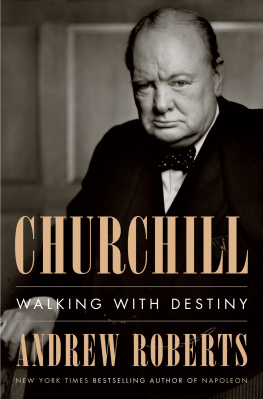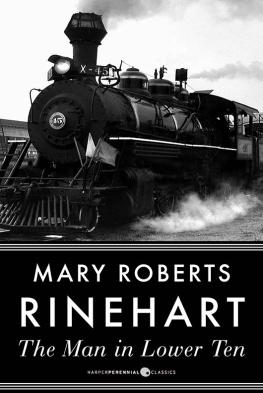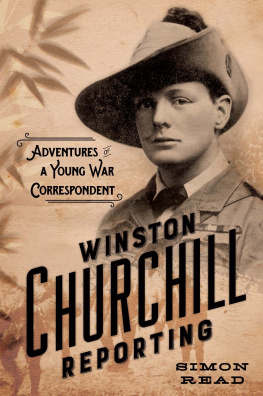Published by Taylor Trade Publishing
An imprint of The Rowman & Littlefield Publishing Group, Inc.
4501 Forbes Boulevard, Suite 200, Lanham, Maryland 20706
www.rowman.com
Unit A, Whitacre Mews, 26-34 Stannary Street, London SE11 4AB
Distributed by NATIONAL BOOK NETWORK
New introduction copyright 2015 by Taylor Trade Publishing
British Library Cataloguing in Publication Information Available
Library of Congress Cataloging-in-Publication Data Available
ISBN 978-1-63076-095-3 (pbk. : alk. paper)
Library of Congress Control Number: 15024921
 The paper used in this publication meets the minimum requirements of American National Standard for Information SciencesPermanence of Paper for Printed Library Materials, ANSI/NISO Z39.48-1992.
The paper used in this publication meets the minimum requirements of American National Standard for Information SciencesPermanence of Paper for Printed Library Materials, ANSI/NISO Z39.48-1992.
Printed in the United States of America
INTRODUCTION
T HE first American journalist permitted to visit the front in the early months of World War I was not a battle-tested Ernie Pyle or Hemingway-esque larger-than-life character, but rather a diminutive yet fearless woman who had made her way to the war zone through a combination of charm and subterfuge.
In 1915 Mary Roberts Rinehart was arguably the most popular woman in America, and inarguably one of the countrys most successful authors of romances, mysteries, and plays, in addition to regularly contributing stories and essays to such popular magazines as the Saturday Evening Post and McClures. After first cracking the top-ten best-seller list with The Man in the Lower Ten in 1909, she rang up three more best-selling books before her departure for Europe and the Great War. And more was to follow: her prolific output and enduring popularity did not wind down until 1953, with the publication of her last book, The Swimming Pool and Other Stories. However, her success in writing was merely a medium through which she could satisfy her lifelong temptation toward adventure, often taking her places and putting her in situations hitherto known only to men. Such was the implausibility of much of her lifeespecially for a woman of the early twentieth centurythat one biographer quoted a line from Shakespeares Twelfth Night to describe it: If this were playd upon a stage now, I could condemn it as an improbable fiction.
* * * * * * * *
Mary Ella Roberts was born in Allegheny, Pennsylvania (now a part of Pittsburgh), in 1876, in what has traditionally been referred to as genteel poverty. All week the house was busy enough, although there was no money, she wrote of her early childhood in a family cluster that consisted of her grandmother, Aunt Sade, and Uncle John, as well as her own parents. There never was any money in those days. Her father Tom was a dreamer, ostensibly the proprietor of a sewing machine shop, but in his heart an inventor whose several patents were paid for in agony... later lapsing without result to him. Maybe in spite of himself, the business nevertheless prosperedalbeit briefly. He moved his family to their own home in 1880; two years later he was managing the Domestic Sewing Machine Company in Pittsburgh. However, by 1887 he had lost his franchise as well as his job. The small family picked up and moved to a less expensive, more austere neighborhood; Tom took to the road to sell everything from wallpaper to insurance policies.
Mary graduated from high school at the height of the Panic of 1893, fully expecting to pursue a career in medicine. However, the Panic changed all that: Now when I spoke of going to college there was a curious silence, she later recalled. My music lessons ceased. One day I came home to find that my belongings had been shifted to my sisters room on the second floor, and that two strange men had rented the room on the third. At about this time she submitted three short stories to the local newspaper in an effort to improve the household finances. All three were accepted for the disappointing sum of $1 each, after which she declared that her career as a woman of letters was over. Prophetically, however, her Uncle John remarked that there was enough plot in one of the stories to make a book.
Medicine still intrigued her, so she lied about her age and talked her way into Pittsburgh Training School for Nurses at Homeopathic Hospital in August 1893, a place where surgeons who had learned their trade during the Civil War still insisted that maggots could be used to cleanse a dirty wound. Her first assignment was to remove from the operating room a bucket containing a human foot. Though this incident certainly shocked her, it did not make her physically ill. She reckoned at that moment that she was cut out for not only nursing but also the greater dramas in life. In her autobiography, My Story, she wrote:
And the emergency ward had drama. One morning I came on duty to find the battered body of a man who had been beaten to death with an iron pipe. One cold evening that fall just before going off duty, I turned down the bed for a burly policeman, crying as though his heart would break, while he placed on it the body of a small newsboy, burned and dying from the fire he had built to keep himself warm. A woman was brought in slashed in thirty places by a jealous rival with a knife; a pretty woman. She recovered.
Indeed, her acceptance of the horror of life at such a tender age well prepared her for the dreadful conditions on the Belgian Front years later. While her mysteries and romances may have been breezy and circumspect, her work as a journalist was at times direct and unrelenting. As she herself affirmed, Why all the evasion, the fear of acknowledging what we know exists, goes on? A big emergency hospital deals with life itself. It cannot evade.
In her early days at the hospital she also became acquainted with the rather severe Dr. Stanley Marshall Rinehart, whose legendary scowl frightened away just about every nurse except the steely Mary Roberts. Dr. Rinehart, a very young (twenty-five years old in 1894) surgeon, and thus probably not of the maggots-as-antiseptic school, was known not only for his skill with the knife but also for his perfectionism and fierce temper. However, Mary saw another side to him that clearly attracted him to her, because it was something that she so lacked as a weary and overworked nurse:
I was in the childrens ward, and he had some cases there. More than that, he loved children. He would walk in, apparently very severe, looking through his pince-nez at the children, and they would rush to him and surround him. He was very gentle with them, and he would play with them. It seemed very strange to me, that playing. Neither then nor later had I that gift of being a child with children.... Later on when my own children were born I was to look back with much heart searching at the neat tidy machine which had fed and bathed and nursed those little wrecks of humanity. I had missed something there. But I was always tired.
Their acquaintance grew into a friendship, and then into a romance. Ever the risk-taker, Mary flouted hospital policy by agreeing to an engagement with a fellow staff member. Very soon thereafter the hospitals chief engineer stumbled upon a tryst, and word spread like an epidemic. Confronted with the facts by the hospital board, Dr. Rinehart responded to their accusations by yelling at them and telling them that it was none of their business. With the meek request that Mary not flaunt her engagement by wearing a ring, the board simply went away.











 The paper used in this publication meets the minimum requirements of American National Standard for Information SciencesPermanence of Paper for Printed Library Materials, ANSI/NISO Z39.48-1992.
The paper used in this publication meets the minimum requirements of American National Standard for Information SciencesPermanence of Paper for Printed Library Materials, ANSI/NISO Z39.48-1992.